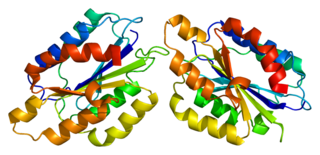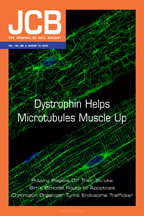| Parent company | Rockefeller University |
|---|---|
| Founded | 1910 |
| Founder | Simon Flexner |
| Country of origin | United States |
| Headquarters location | New York City |
| Publication types | Academic journals |
| Nonfiction topics | Science |
| Official website | www |
The Rockefeller University Press (RUP) is a department of Rockefeller University.
Rockefeller University Press publishes three scientific journals: Journal of Experimental Medicine , founded in 1896, Journal of General Physiology , founded in 1918, and Journal of Cell Biology , founded in 1955 under the title The Journal of Biophysical and Biochemical Cytology. All editorial decisions on manuscripts submitted to the three journals are made by active scientists in conjunction with in-house scientific editors, and all peer-review operations and pre-press production functions are carried out at the Rockefeller University Press offices. In 2018, Rockefeller University Press partnered with EMBO Press and Cold Spring Harbor Laboratory Press to launch the "Life Science Alliance" journal.
Rockefeller University Press places a strong emphasis on preserving the integrity of primary research data, and it is a pioneer in the application of new technologies to achieve that goal. [1] [2] [3]
Rockefeller University Press provides public access to the articles it publishes. [4] [5] All content of Journal of Experimental Medicine, Journal of Cell Biology, and Journal of General Physiology (back to volume 1, issue 1) is hosted on Silverchair and PubMed Central, where it is available to the public for free 6 months after publication under a Creative Commons license. Some content is published Open Access immediately upon publication under a CC-BY license.

Christian René Marie Joseph, Viscount de Duve was a Nobel Prize-winning Belgian cytologist and biochemist. He made serendipitous discoveries of two cell organelles, peroxisomes and lysosomes, for which he shared the Nobel Prize in Physiology or Medicine in 1974 with Albert Claude and George E. Palade. In addition to peroxisome and lysosome, he invented scientific names such as autophagy, endocytosis, and exocytosis on a single occasion.

Albert Claude was a Belgian-American cell biologist and medical doctor who shared the Nobel Prize in Physiology or Medicine in 1974 with Christian de Duve and George Emil Palade. His elementary education started in a comprehensive primary school at Longlier, his birthplace. He served in the British Intelligence Service during the First World War, and got imprisoned in concentration camps twice. In recognition of his service, he was granted enrolment at the University of Liège in Belgium to study medicine without any formal education required for the course. He earned his Doctor of Medicine degree in 1928. Devoted to medical research, he initially joined German institutes in Berlin. In 1929 he found an opportunity to join the Rockefeller Institute in New York. At Rockefeller University he made his most groundbreaking achievements in cell biology. In 1930 he developed the technique of cell fractionation, by which he discovered the agent of the Rous sarcoma, as well as components of cell organelles such as the mitochondrion, chloroplast, endoplasmic reticulum, Golgi apparatus, ribosome, and lysosome. He was the first to employ the electron microscope in the field of biology. In 1945 he published the first detailed structure of cell. His collective works established the complex functional and structural properties of cells.

Utrophin is a protein that in humans is encoded by the UTRN gene. The name is a short form for ubiquitous dystrophin.

Integrin alpha-1 also CD49a is an integrin alpha subunit encoded in humans by the gene ITGA1. It makes up half of the α1β1 integrin duplex. Though CD49a can bind a number of ligands including collagen IV, collagen I, and others.

Nuclear factor of activated T-cells, cytoplasmic 2 is a protein that in humans is encoded by the NFATC2 gene.

Integrin beta-5 is a protein that in humans is encoded by the ITGB5 gene.

Guanine nucleotide exchange factor VAV2 is a protein that in humans is encoded by the VAV2 gene.

Cytoplasmic dynein 1 intermediate chain 2 is a protein that in humans is encoded by the DYNC1I2 gene.

Cytoskeleton-associated protein 4 is a protein that in humans is encoded by the CKAP4 gene.

Centromere/kinetochore protein zw10 homolog is a protein that in humans is encoded by the ZW10 gene. This gene encodes a protein that is one of many involved in mechanisms to ensure proper chromosome segregation during cell division. The encoded protein binds to centromeres during the prophase, metaphase, and early anaphase cell division stages and to kinetochore microtubules during metaphase.

Peroxisome biogenesis factor 10 is a protein that in humans is encoded by the PEX10 gene. Alternative splicing results in two transcript variants encoding different isoforms.

Uroplakin-1a (UP1a) is a protein that in humans is encoded by the UPK1A gene.

Transcription cofactor HES-6 is a protein that in humans is encoded by the HES6 gene.

Protein phosphatase 1G is an enzyme that in humans is encoded by the PPM1G gene.

Ewald Rudolf Weibel HonFRMS was a Swiss anatomist and physiologist and former director of the Institute of Anatomy at the University of Bern. He was one of the first scientists to describe the endothelial organelles Weibel–Palade bodies, which are named after him and his Romanian-American colleague George Emil Palade. He was known for his work on the anatomy of gas exchange in lungs on multiple spatial scales using stereology.

The Journal of Cell Biology is a peer-reviewed scientific journal published by Rockefeller University Press.

Centrosomal protein of 164 kDa, also known as CEP164, is a protein that in humans is encoded by the CEP164 gene. Its function appears two be twofold: CEP164 is required for primary cilium formation. Furthermore, it is an important component in the response to DNA damage by UV light.
David Schlaepfer is a California-born scientist known for his studies on cell migration and cancer metastasis. His early research focused on signaling by protein kinases, with a subsequent focus on the proteins that regulate the turnover of cell contacts with the extracellular matrix. In particular, Schlaepfer is well known for his studies on focal adhesion kinase (FAK).

MIS18 binding protein 1 is a protein that in humans is encoded by the MIS18BP1 gene. The gene is also known as LKNL2, M18BP1, C14orf106, and HSA242977.

Sfi1 homolog, spindle assembly associated (yeast) is a protein that in humans is encoded by the SFI1 gene. It localizes to the centriole, and its S. pombe ortholog has been shown to be involved in spindle pole body duplication. SFI1 forms a complex with centrin 2.